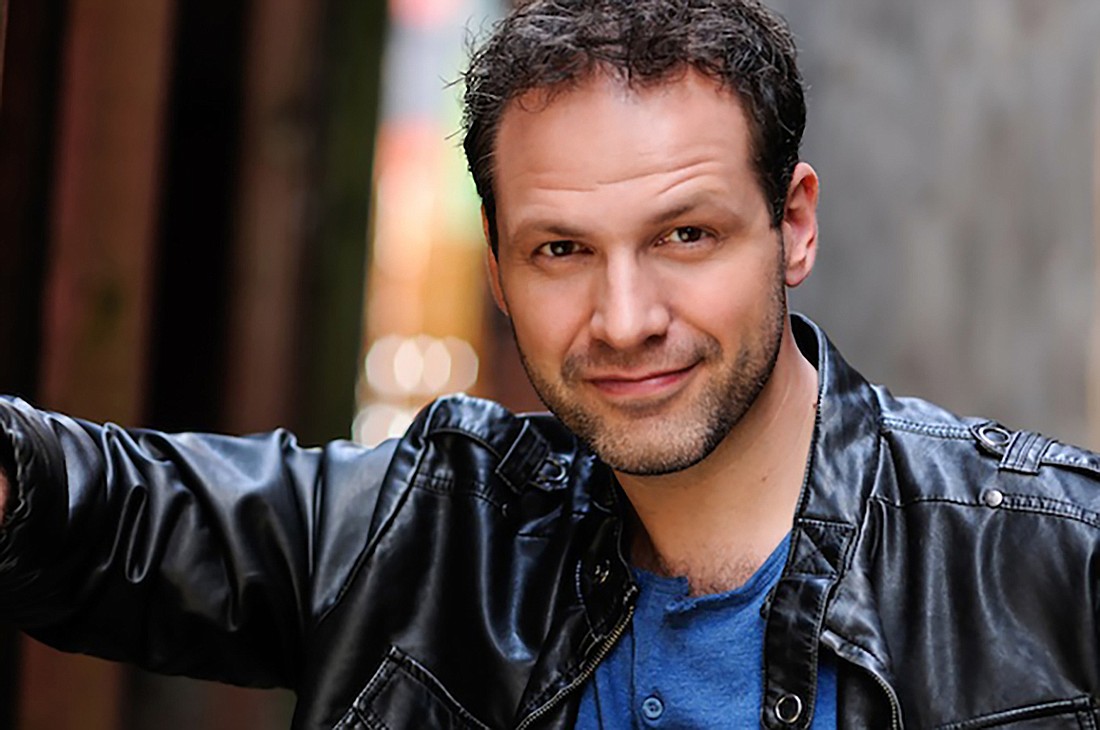- April 15, 2024
-
-
Loading

Loading

Director Jason Cannon doesn’t shrink from voyages to strange and dangerous places. He’s taken Florida Studio Theatre audiences to the heart of darkness (“How to Use a Knife”); the scene of a classroom tragedy (“Gidion’s Knot”); and the enigmatic equations of Einstein’s mind (“Relativity.”)
Cannon’s odysseys for younger audiences sail to realms of pure imagination — whimsical and wonderful realms with dangers of their own. Cannon’s latest expedition takes you through the portal of a prosaic wardrobe to the fantastic land of Narnia.
The FST Children’s Theatre production is a stage adaptation of C.S. Lewis’ beloved “The Lion, the Witch and the Wardrobe.” As Lewis fans know, Narnia is a magical place, but hardly safe. Great children’s literature is never childish; the war between good and evil wages behind the wardrobe’s door as well.
We recently spoke with Cannon about the journey audiences will experience when they join the children on Lewis’ timeless odyssey.
“Lion” was definitely part of my childhood experience. I read the book several times growing up, and the entire “Chronicles of Narnia” series a couple times. I dove deep into C.S. Lewis in high school for a big project on “The Screwtape Letters,” and again in 2004, when I wrote a play about the friendship between Lewis and Tolkien. I also got to see my Aunt Vonda portray the White Witch in a funny adaptation.
I’d have to give that honor to J.R.R. Tolkien. As a kid and teenager, I actually preferred “The Hobbit” and “The Lord of the Rings” series to the “Narnia” series, but when I was asked to direct this play, I was definitely excited.
Stay out of the way of the magic, and trust the power of the audience’s imagination. The script is incredibly well constructed, so I focus primarily on empowering the actors to make the biggest and most magical choices they can as they leap between characters.
Two of our awesome acting apprentices. They portray all the essential characters to tell the story.
As a director, it’s been a vastly different experience for me. I’d previously just directed “Once,” and “How to Use a Knife” — all of which are main stage shows for grown-ups.
True. But there’s another key difference besides content.
“Lion” takes full advantage of the theater’s power to bend space and time in a creative way. When you strip a story down to what’s essential, that’s when the magic truly happens. And that magic is common for children — they haven’t yet been taught to self-censor or need to justify their imagination. In live theater, the audience’s imagination is the most powerful tool of all.
For me as a theater artist, it has been a wonderful reminder to trust the audience and tap into their imagination at every opportunity. I actually think Lewis has woven that lesson throughout his Narnia novels. Aside from that deep magic, it’s also just super fun to have the actors do all sorts of silly walks and voices. Playing so many different characters (including many nonhuman characters.) really stretches their physical and vocal boundaries. The young actors really had to find the essential truth of “faun” and “witch” and “bird” and “lion.”
That hope, love, and bravery can overcome cruelty and selfishness. That imagination is far more powerful than any mega-million dollar budget. That stories can teach us truths at a bone-deep level. And that sharing live experiences is precious.
The script itself is a fresh take. Lewis was well versed in origin stories and myths from around the world. The familiarity of the story, which is actually just a result of the universality and timelessness of these themes and characters, stems from Lewis’s ability to find the commonality amongst all the different manifestations of resurrection stories, “witches,” fauns, heroes, “time travel,” transformation, etc. We actually see similar archetypes in J.K. Rowling’s Harry Potter series.
The author himself would disagree with that premise, actually. Lewis had a complicated and arduous faith journey, with several stops along the way, including many years as an atheist. He and Tolkien both pushed back against any assertion that “The Lord of the Rings” or “Narnia” books were pedestrian allegories for anything too specific—whether Christianity or World War I. They both pulled from and blended the mythology of many cultures and literary traditions. This weaving together actually makes their stories incredibly accessible for readers of all backgrounds. If there’s any common value they share, Lewis and Tolkien both simply extol the virtues of pastoral English life.